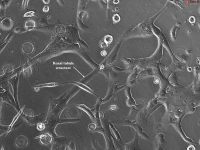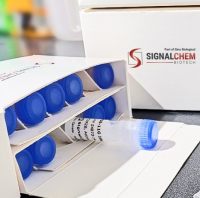Pore Formation by T3SS Translocators: Liposome Leakage Assay
互联网
1211
Gram-negative bacteria utilize a dedicated membrane-embedded apparatus, the type III secretion system (T3SS), to inject proteins into host cells. The passage of the proteins across the target membrane is accomplished by a proteinaceous pore—the translocon—formed within the host-cell cytoplasmic membrane. Translocators bound to their chaperones can be expressed in Escherichia coli and subsequently dissociated from the chaperone by guanidine treatment. The pore formation properties of the translocators can then be studied by an in-vitro liposome leakage assay. Sulforhodamine-B is encapsulated within lipid vesicles during liposome preparation. At high concentration, this fluorochrome exhibits self-quenching limiting fluorescence emission. Upon pore formation, liposome leakage leads to the dilution of Sulforhodamine-B in the medium and fluorescence emission increases. Alternatively, fluorochromes coupled to large dextran molecules can be encapsulated in order to estimate pore dimensions. Here we describe protein expression and purification, dye-liposome preparation, and leakage assay conditions.









